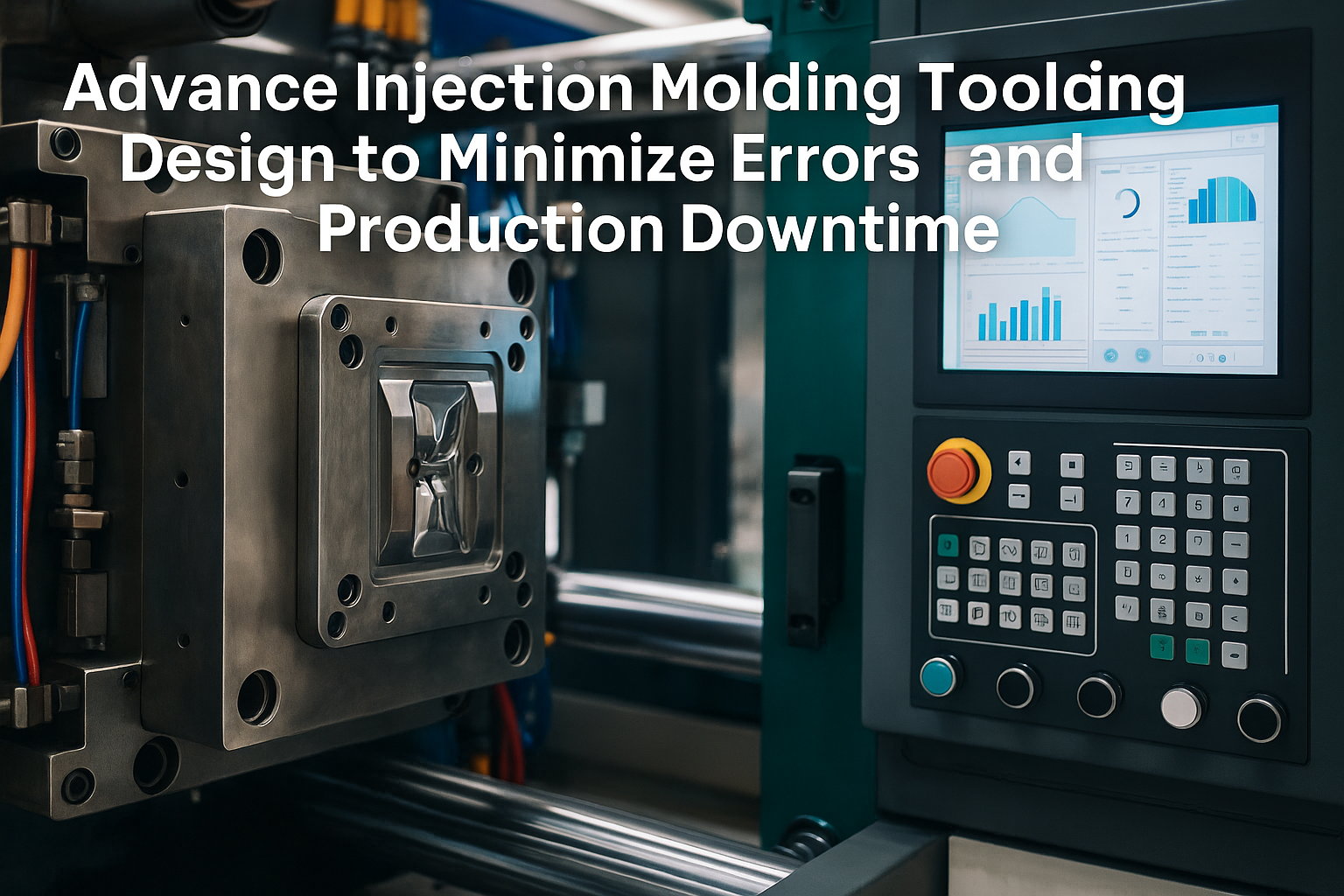Advance Injection Molding Tooling Design to Minimize Errors and Production Downtime
Advance Injection Molding Tooling Design to Minimize Errors and Production Downtime

In a high‑pressure manufacturing environment, unplanned press stoppages and scrap spikes can erode profit margins in minutes. The root cause is often traced back to tooling: inadequate cooling, venting issues, or steel fatigue that could have been mitigated during the design stage. By investing in advanced injection molding tooling design, manufacturers dramatically reduce start‑up rework, production rejects, and costly downtime. Taiwan‑based INTERTECH (https://www.taiwanmoldmaker.com) integrates simulation‑driven design, additive manufacturing, and smart‑factory monitoring to create molds that run consistently—shift after shift.
1 Common Tool‑Related Errors and Their Costs
| Error | Typical Cause | Production Impact |
|---|---|---|
| Short shots / sinks | Insufficient venting, uneven cooling | Part scrap; press adjustments lost time |
| Flash & burrs | Worn shut‑offs, poor steel fit | Rework, post‑trim labour |
| Warpage | Unbalanced cooling channels | Assembly misfits, warranty risk |
| Premature wear | Fibreglass‑filled resins on soft steel | Frequent mold pulls, steel replacement |
| Extended cycle time | Undersized cooling lines | Idle labour, higher energy cost |
2 Design Innovations that Eliminate Downtime
2.1 Conformal Cooling via Metal Additive Manufacturing
-
3‑D printed H13 inserts follow part geometry, reducing cooling variation to ±1 °C.
-
Cycle time typically drops 15–25 %, boosting press availability.
2.2 Predictive Simulation & Digital Twin
-
Mold‑flow, warp, and fiber‑orientation analysis identify hotspot warpage and gate imbalance before steel is cut.
-
Digital twins feed real‑time sensor data back into simulation for live process tuning.
2.3 Self‑Healing Vent Components
-
Replaceable porous sintered vents prevent clogging without full mold teardown.
-
Maintenance windows shrink from hours to minutes.
2.4 Wear‑Resistant Coatings & Inserts
-
PVD TiN / DLC coatings on gates and runners extend life of abrasive‑filled resin tools.
-
Swappable gate inserts allow quick refurb without shipping mold halves off‑site.
3 Smart Mold Monitoring
| Sensor | Parameter Tracked | Benefit |
|---|---|---|
| Cavity pressure & temperature | Detects short shots, predicts pack‑&‑hold needs | Automatic alarm & shut‑down avoid mass scrap |
| Cycle counter & shot clock | Tracks preventive maintenance schedules | Eliminates unexpected press downtime |
| Water flow & ΔT sensors | Spots cooling blockage | Maintains cycle time consistency |
INTERTECH’s molds can integrate IO‑Link ® or RJG eDART® systems for data logging directly to MES dashboards.
4 Design‑for‑Maintenance (DFM‑X) Best Practices
-
Modular inserts located over high‑wear cores for quick swap.
-
Ejector plates with slide‑out rails enabling cleaning while mold remains in‑press.
-
Standardised components (springs, bushings) reduce spare‑parts inventory.
5 INTERTECH’s Tooling Design Workflow
-
Concept & DFM Review – Collaborative CAD session with customer engineering.
-
CAE Simulation Suite – Mold‑flow, cooling, structural FEA.
-
Hybrid Manufacturing – CNC + metal AM for conformal inserts.
-
Steel Validation – Rockwell & ultrasonic inspection prior to assembly.
-
Trial & IQ/OQ – On‑press validation: pressure curves, ΔT mapping, Cpk ≥ 1.67.
Explore our tooling capabilities and custom molding services for detailed tech specs.
Conclusion
Advanced injection molding tooling design is the most cost‑effective insurance against production errors and downtime. Through simulation, conformal cooling, wear‑resistant materials, and smart monitoring, INTERTECH delivers molds that uphold tight tolerances, fast cycles, and reliable uptime—translating directly into lower total cost of ownership and happier customers.
Want to upgrade your tooling for zero‑defect production? Contact INTERTECH for a design audit and ROI calculation.








